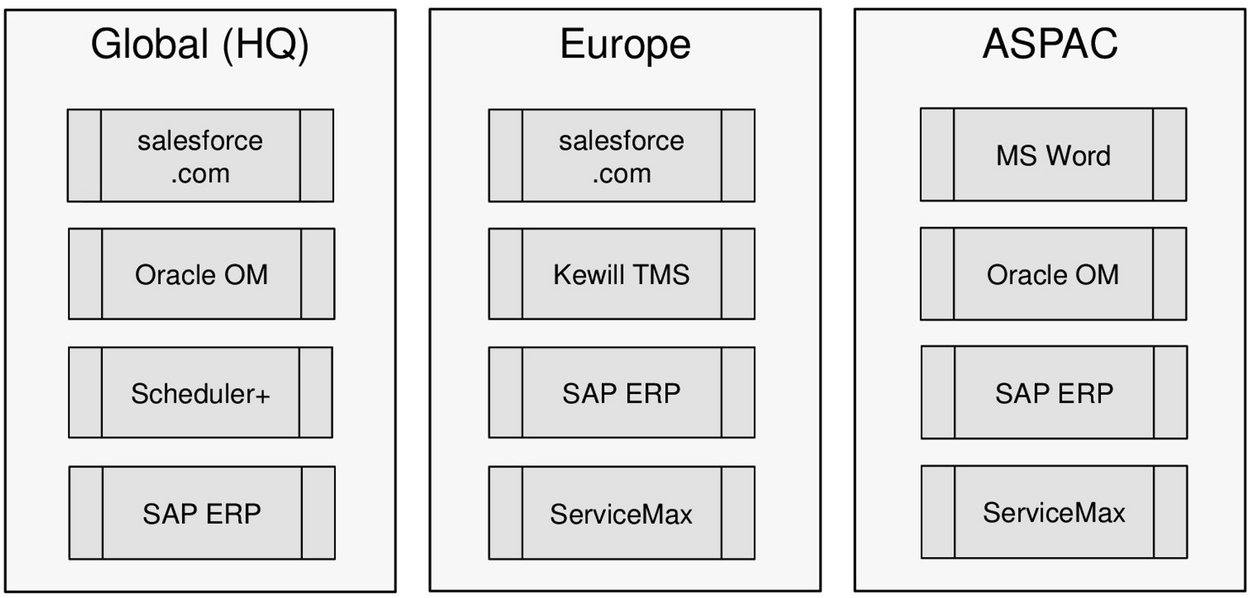Chatper 3.1 - Enterprise Application Architecture
Enterprise Application Architecture
Revisiting Enterprise Architecture Management (EAM)
Enterprise Architecture Management (EAM) is founded on aligning IT with business needs holistically. As Figure below and Chapter 1 highlight, the objective is to craft an application landscape informed by business requirements. The guiding principle has been a top-down approach: starting with a comprehensive understanding of the business, then defining the IT support structure, particularly the applications. However, it’s critical to remember that IT innovations can reshape business processes, such as automating workflows and reducing manual tasks.

In Chapter 4, we’ll explore how changes in the application landscape affect the business. The primary driver is the top-down approach where business needs dictate IT evolution. Yet, we must stay cognizant of IT’s potential impact on business operations.
Core Concepts of Application Architecture
Application architecture, or the application layer, is the focal point of this section. As per Definition 3.1, it includes all software applications within an organization, their interactions, and their alignment with business context. We’re not just discussing applications in isolation, but emphasizing their business value.
Definition 3.1: Application Architecture The application architecture, also known as the application layer, comprises:
- Relationships with business architecture
- Interfaces among applications
Chapter 1 presented tools like process maps to visualize business operations. Here, we use similar maps to illustrate application architectures, showcasing the software ecosystem and necessary management data.
Visualizing Application Landscapes
An application landscape example is depicted in Figure below, where four systems exchange data through business objects linked to their connecting lines. The direction of data flow is indicated by arrowheads.

For instance, the CRM system, salesforce.com, supplies customer data to both a transport management system and a customer service system.
Organizational Context of Applications
Remember the organizational map from Figure below? It assigns applications to specific organizational units across global headquarters and regional subsidiaries in Europe and Asia-Pacific. This map helps identify software redundancies or common systems, hinting at the complexity when subsidiaries independently procure IT.

The Complexity of Real-World Landscapes
Real-world application landscapes are typically extensive and intricate. While textbook examples are simplified to illustrate concepts, they are far from the scale of actual enterprise landscapes. This is exemplified in Figure below.

Here, applications are plotted against business capabilities, revealing the functional distribution of applications. Colour coding adds another layer of information, distinguishing between legacy systems, global applications, regional specifics, or product-specific solutions.
Such a map, derived from a real project, served as a management tool for top executives, visualizing the current “as-is” architecture. The same visual concept can be applied to future “to-be” architectural planning.
Toward an Ideal Application Landscape
Next, we introduce a methodology for crafting an optimal application landscape, focusing on deriving applications from business capabilities. This approach emphasizes the “business drives IT” philosophy by mapping applications to capabilities, demonstrating a strategic alignment between business and IT.